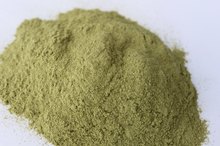What Causes Warts on the Face?
The most typical types of warts you may find on the face are called flat warts and filiform warts. Adults who see a sudden large wart appear on the face may want to visit the dermatologist to ensure it is not actually a mole that warrants additional attention. Children will typically see these types of warts come and go if they are left alone.
The Facts
Warts are caused by the human papilloma virus (HPV). Common warts like those found on the face, hands and feet are a specific strain of this virus. There are more than 150 different kinds of HPV -- identifying the one causing facial warts is unlikely.
Warts are generally an outward symptom of a poor immune system. People with strong immune systems can typically fight off the virus responsible for facial warts. Strengthen the immune system through proper diet, adequate water intake and vitamin and mineral supplements.
- Warts are caused by the human papilloma virus (HPV).
- People with strong immune systems can typically fight off the virus responsible for facial warts.
Identification
Eye Infection in HPV
Learn More
Warts are typically colorless or skin-colored. They appear as raised bumps, usually in a row, or maybe individually. Brown, raised bumps on the face or other parts of the body are moles rather than warts. Ask a dermatologist -- skin specialist -- if you are unsure.
- Warts are typically colorless or skin-colored.
- Brown, raised bumps on the face or other parts of the body are moles rather than warts.
Time Frame
Different warts grow at various rates. Filiform warts on the face have frond-like projections and grow very quickly, sometimes several millimeters above the skin. Flat warts on the face grow more slowly and typically stay flat against the surface of the skin, though they may be two or more millimeters in diameter. If left completely undisturbed, warts will usually disappear in a few months and not spread.
- Different warts grow at various rates.
- Flat warts on the face grow more slowly and typically stay flat against the surface of the skin, though they may be two or more millimeters in diameter.
Solutions
How to Determine if a Face Blemish Is a Wart or Pimple
Learn More
Warts will typically go away on their own, though it can take a long time. Visit your dermatologist or doctor if the warts are particularly unsightly or seem to be spreading 3. Keep in mind that removing the warts often causes scarring, so waiting several months before pursuing this option might be a better alternative.
Expert Insight
Do not attempt to cut off a wart. Doing this simply spreads the virus to other parts of your face and may cause further infection in the cut area. If you are a man who shaves his face, keep in mind that shaving will cut the warts off and potentially spread them over your face or to other parts of your body.
Related Articles
References
- The Journal of Clinical and Aesthetic Dermatology: Glycolic Acid 15% Plus Salicylic Acid 2% -- A New Therapeutic Pearl for Facial Flat Warts
- Clinical Medicine & Research: An Armamentarium of Wart Treatments
- ISRN Dermatology: Treatment of Plane Warts with a Low-Dose Oral Isotretinoin
- Campaner AB, Cardoso FA, Fernandes GL, Veasey JV. Verrucous carcinoma of the vulva: diagnosis and treatment. An Bras Dermatol. 2017;92(2):243-245. doi:10.1590/abd1806-4841.20174929
- TeensHealth. Warts. Updated February 2019.
- Vlahovic TC, Khan MT. The Human Papillomavirus and Its Role in Plantar Warts: A Comprehensive Review of Diagnosis and Management. Clin Podiatr Med Surg. 2016;33(3):337-53. doi:10.1016/j.cpm.2016.02.003
- Yanofsky VR, Patel RV, Goldenberg G. Genital warts: a comprehensive review. J Clin Aesthet Dermatol. 2012;5(6):25–36.
- Johns Hopkins Medicine. Warts in children.
- Patidar S. Combination treatment of periungual warts. J Cutan Aesthet Surg. 2008;1(1):23–24. doi:10.4103/0974-2077.41154
- Al Aboud AM, Nigam PK. Wart (Plantar, Verruca Vulgaris, Verrucae). StatPearls. Sept 27, 2019.
- Yanofsky VR, Patel RV, Goldenberg G. Genital warts: a comprehensive review. J Clin Aesthet Dermatol. 2012 Jun;5(6):25-36.
Writer Bio
Jamie Simpson is a researcher and journalist based in Indianapolis with more than 10 years of professional writing experience. She earned her B.S. in animal science from Purdue University and her Master of Public Affairs in public management from Indiana University. Simpson also works as a massage therapist and equine sports massage therapist.









